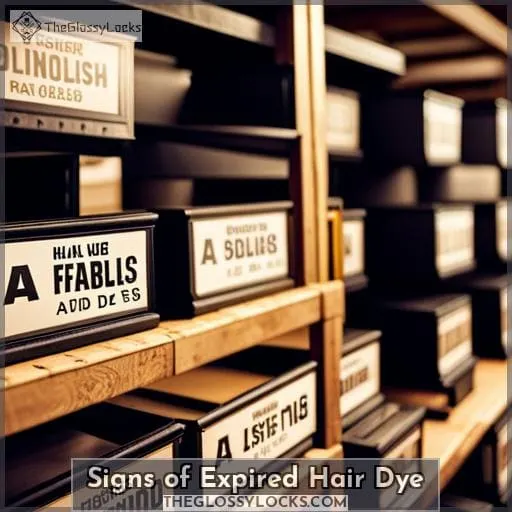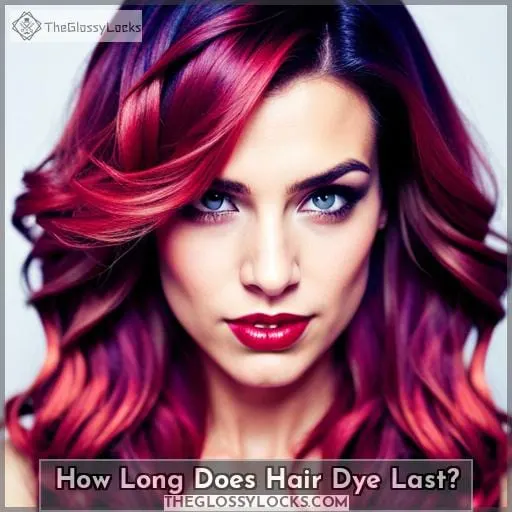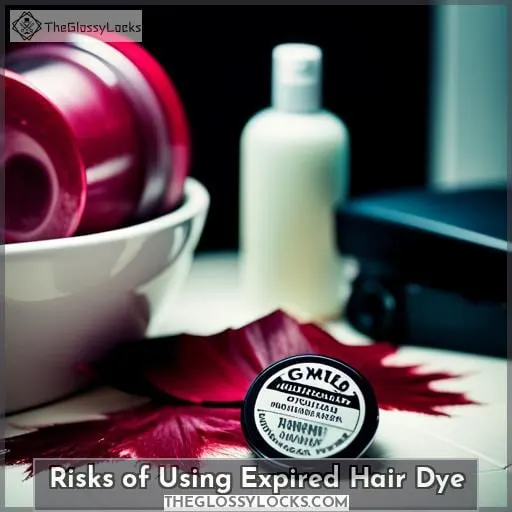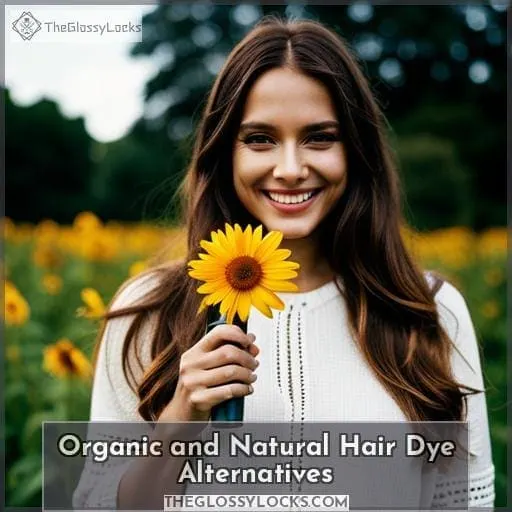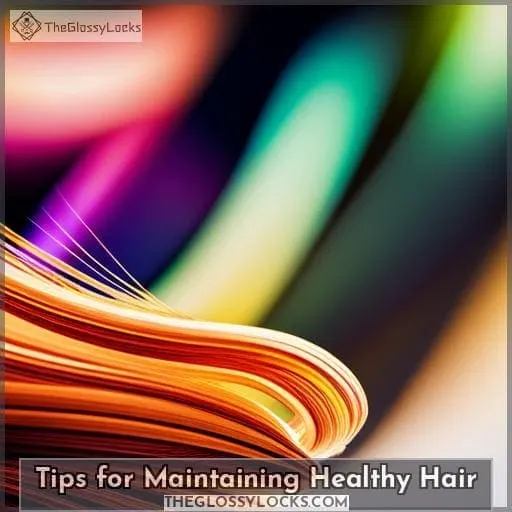This site is supported by our readers. We may earn a commission, at no cost to you, if you purchase through links.
Hey there! Are you considering changing up your look with a new hair color? It’s an exciting idea, isn’t it? However, when dealing with chemical products like hair dye, safety should be top priority.
Did you know that over 80% of women in the US use some kind of permanent or semi-permanent hair coloring product at least once per year? That’s why it’s important to understand if and how these products can expire – so that we can dye our locks without putting ourselves at risk.
In this article, we’ll discuss the signs of expired hair dye as well as tips for maintaining healthy and vibrant colored tresses.
Table Of Contents
Key Takeaways
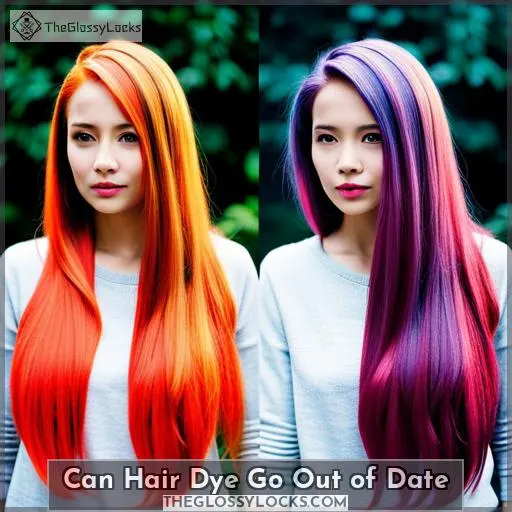
- Hair dye can expire and cause adverse effects such as uneven coloring and greenish discoloration in light locks, as well as weakened cuticles leading to breakage.
- Long-term use of permanent dyes can increase the risk of cancer and cause allergic reactions.
- Organic and natural hair dye alternatives, such as henna and vegetable dye, are available and won’t damage hair, but may require more frequent application.
- Checking the expiration date before purchasing any hair dye product is crucial, and using natural and organic dyes or sticking to the 3-year shelf life rule is best for hair health.
Signs of Expired Hair Dye
You may not think about it, but hair dye can go out of date. To ensure you don’t experience any unexpected allergic reactions or uneven coloring due to a bad batch, it’s important to be aware of the signs that your hair dye has expired.
Unopened hair dye is typically safe for use up to three years from its manufacture date. However, without an expiration date printed on the packaging, it can be difficult for consumers to determine on their own.
If you’re looking at an opened package and wondering if it’s still good, look out for strange smells or colors in the mixture, as well as caking around caps or damaged/leaked packaging. These could indicate chemical degradation over time and render your product unusable.
Sensory tests are also useful when determining usability. Water infiltration and freezing are two surefire ways that will make any product unsafe, so avoid these! It never hurts to double-check online too.
Some manufacturers provide both expiration dates and batch codes, so Googling yours might give more definitive answers than a visual inspection alone would provide.
For general haircare safety tips, consider using pH balanced shampoo (especially if you have high porosity), since healthy cuticles offer greater protection against damage caused by harsh chemicals used in dyes.
How Long Does Hair Dye Last?
Tempting as it is, staying young forever isn’t an option – so you’d better be aware of how long your hair coloring will last! Hair dye has a shelf life, and it’s important to take this into account when deciding on your next color change.
Depending on the type of hair dye used, its lifespan can range from three years for unopened products to six weeks after opening. Caring for colored hair means understanding that quality matters even more than quantity.
Using expired product may result in uneven coloring or cause greenish discoloration in light locks.
Hair protection should always be a top priority when considering any cosmetic product. Old hair dye can lead to breakage due to high porosity and weakened cuticles caused by oxidation over time. To avoid damage, choose pH-balanced shampoos specifically designed with dyed tresses in mind.
The FDA doesn’t require expiration dates on cosmetics, but many companies provide them or even batch codes which allow consumers access information about their chosen shade’s age before they buy the item itself.
For those wanting something less permanent, there are organic/natural alternatives available such as vegetable dyes. These don’t tend to have any health risks associated with them either like chemical-based solutions do.
Risks of Using Expired Hair Dye
Using expired hair dye can have serious consequences, so it’s important to be aware of the risks. Manufacturers advise that hair dye should only be used within three years of its manufacture date. Beyond this time period, chemical reactions occur which may lead to adverse effects.
Hair damage is one possible consequence, as color fading or uneven coloring may result from using old products. Moreover, permanent dyes can cause allergic reactions in some people due to changes in their composition over time.
Freezing temperatures also reduce their effectiveness, and protective measures must therefore be taken when storing them for any length of time. Additionally, health risks are associated with long-term use. These include a higher risk of cancer due to exposure to certain chemicals present in the product, such as ammonia and hydrogen peroxide, which become more toxic when combined with age or heat exposure.
Organic and Natural Hair Dye Alternatives
If you’re looking for a safer alternative to chemical hair dyes, organic and natural options are available. Plant-based dyes contain no harsh chemicals or bleaches and can provide subtle highlights, darken gray hairs, or give lighter color results.
Natural herbs such as henna are also used in some products to add color without damaging the hair cuticle like chemical dye does.
Here is a list of popular organic/natural alternatives:
- Henna
- Vegetable Dye
- Flower Pigments
- Chemical Free Hair Colors
- Herbal Dyes
These products come from vegetable sources; they don’t have any synthetic preservatives that could cause irritation or allergic reactions as some cosmetic companies use in their formulas for traditional hair color treatments.
These treatments often contain ammonia and other compounds which can be potentially harmful if used over time.
Natural plant-based colors won’t damage your hair but may require more frequent application than permanent dyes since they tend not to last long when exposed to sunlight and air pollutants. However, they still provide good coverage even on grey hairs, usually with a darker result compared to using conventional dying techniques.
Uneven coloring results are sometimes seen at home when attempting these types of procedures by yourself.
Of course, it’s best always to check the expiration date before purchasing any product – including those claiming all-natural ingredients – so you know exactly what’s going into your body!
Tips for Maintaining Healthy Hair
To maintain healthy hair, it’s important to use a pH-balanced shampoo and wait at least six weeks between dye jobs. Research has found that nearly 25% of people with damaged hair were using expired hair dyes.
However, there are other ways to care for your locks beyond just waiting between colorings.
Deep conditioning treatments can help repair damage from heat styling or chemical changes caused by old or expired products. Using natural oils such as coconut oil or argan oil can also add moisture and shine back into dry or brittle strands.
Protective styling, like braids or twists, can give your tresses a break from daily manipulation and reduce the risk of breakage and split ends. Additionally, avoiding excessive heat styling tools like flat irons or curling wands can prevent further damage to already fragile strands.
Hair masks are another great way to nourish your mane with ingredients that target specific concerns like frizz control, hydration boosters for parched locks, or protein-infused formulas if you have weak spots in need of reinforcement.
Shelves stocked with numerous options may leave consumers wondering about regulation surrounding cosmetic expiration dates. Combined efforts among companies, self-regulation, and consumer awareness help ensure safety while limiting unwanted side effects associated with store-bought cosmetics.
Opting for organic/natural alternatives is one way consumers seek peace of mind regarding product shelf life. Continued education on available resources empowers individuals seeking optimal health.
| Hair Type | Recommended Products | Frequency |
|---|---|---|
| Normal Hair | pH Balanced Shampoo/Conditioner Coconut Oil Mask once per week | Once per week |
| Dry/Brittle Hair | Deep Conditioning Treatment (once every two weeks) Argan Oil Serum (daily) | Once every two weeks, Daily |
| Fine/Oily Hair | Dry Shampoo Spray Light Conditioner | Daily/Every Other Day |
Incorporating these tips and treatments into your hair care routine can help maintain healthy, happy locks. Remember to take extra precautions with expired or old hair dyes, as they may not work effectively and could potentially cause unwanted side effects.
Stay informed about regulations surrounding cosmetic expiration dates and consider exploring organic/natural alternatives for added peace of mind.
Frequently Asked Questions (FAQs)
Can I still use expired hair dye on my hair?
Using expired hair dye can be risky as it may not work effectively, result in uneven coloring, or cause an allergic reaction. Additionally, contamination by bacteria or fungi is possible with opened products.
Can I mix expired hair dye with a new one?
Mixing expired hair dye with a new one is not recommended. Even if the expiration date has passed, chemical reactions may occur, affecting the color and causing damage to your hair.
How can I tell if my hair dye has gone bad?
To determine if your hair dye has gone bad, check for an unusual smell or color, streaking or separation in the liquid, cracked packaging, and caking around the cap. Expired products may result in uneven coloring and pose health risks associated with chemicals.
Are there any long-term health risks associated with using expired hair dye?
Using expired hair dye can lead to long-term health risks, such as allergic reactions, chemical burns, and even cancer. The chemicals in the dye may break down over time and become toxic. It is best to discard any expired hair dye for safety reasons.
Are there any natural or organic alternatives to chemical hair dye?
If you’re searching for natural or organic alternatives to chemical hair dye, consider trying henna, vegetable-based dyes, or tea rinses. These options are kinder to your hair and scalp, while still offering a variety of stunning colors.
Conclusion
Using expired hair dye can be a gamble. Not only is the color unpredictable, but you also run the risk of an allergic reaction. To keep your hair healthy, it’s best to use natural and organic dyes or stick to the 3-year shelf life rule.
However, if you choose to use expired hair dye, be sure to look for signs of oxidation, water infiltration, cracking, and discoloration. Keep in mind that any product left open or exposed to sunlight, air, heat, or humidity will degrade quickly.
With the right knowledge and caution, you can keep your hair looking beautiful and healthy for years to come.

